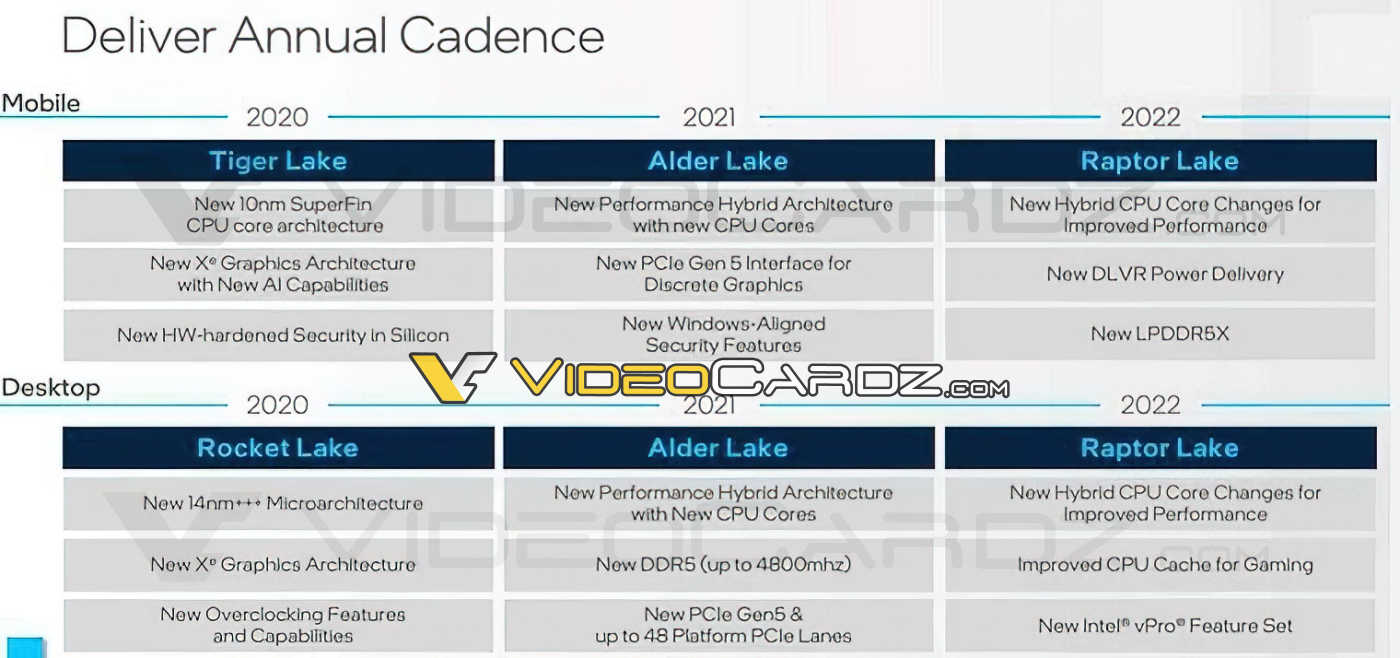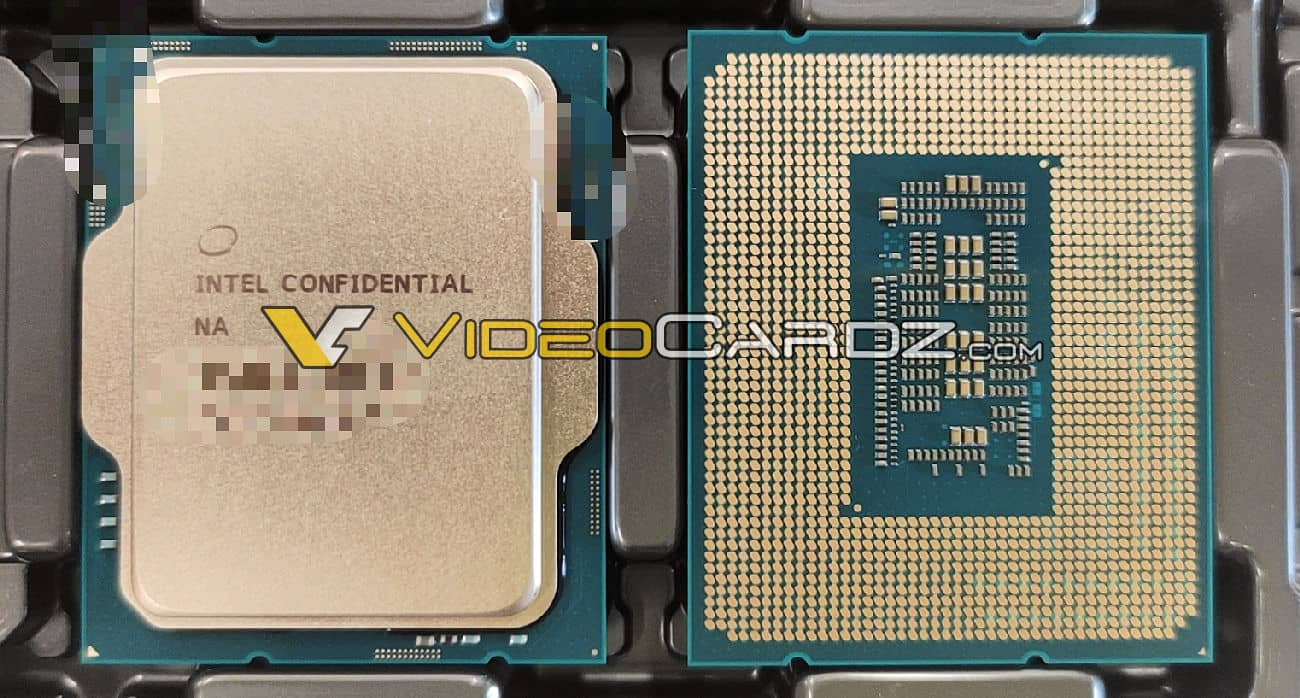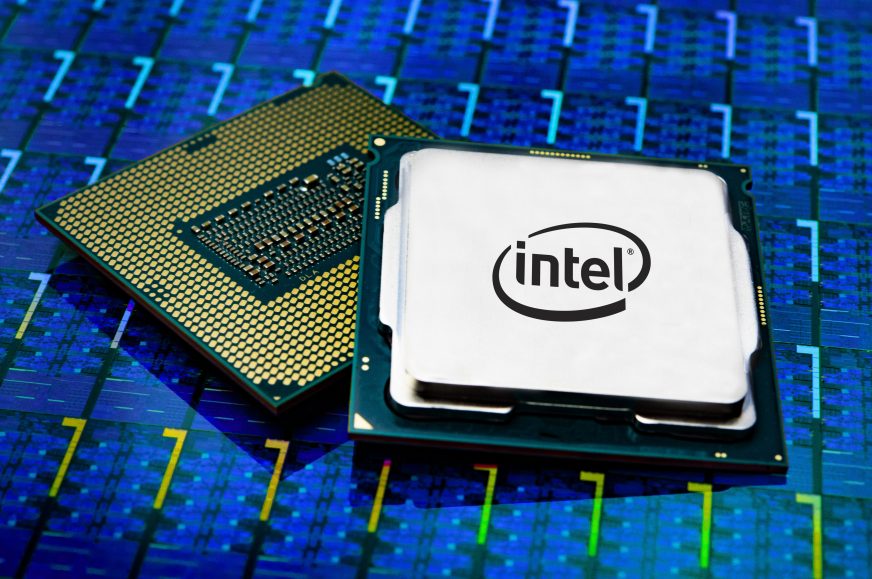Intel processor roadmap for 2021 to 2022: Alder Lake and Raptor Lake
According to a roadmap leak, Intel is preparing another family of 10nm processors after the 12th generation (Alder Lake). It’s called Raptor Lake and it should be released around the end of 2022. We already have the first look at what it should bring – Intel plans to stick to the big.LITTLE architecture, but with performance improvements and changes to L3 cache that should improve performance especially in games.
More information has come up about Intel’s future plans with processors: VideoCardz has acquired an Intel roadmap for 2021 and 2022, which confirms future Raptor Lake processors. This document confirms that after Alder Lake, there will be another generation of 10nm processors released before Intel deploys the 7nm process – the first 7nm CPU is to be Meteor Lake. Raptor Lake is therefore likely a new 10nm generation inserted before 7nm chips, because this process node will not be ready in time.
You can see the document with the roadmap below. According to VideoCardz, it is not exactly recent – for example, it still expects that the upcoming Rocket Lake CPUs will be introduced before the end of 2020, which did not happen (the release will be on March 30). So this is probably proof that Rocket Lake was originally supposed to come to the market earlier. According to VideoCardz, Intel postponed it to March this year around Q4 2020 (i.e. just weeks before the originally planned release?), so the roadmap should have been from a period before that.
Raptor Lake is said to be released in 2022 as the successor to Alder Lake which Intel wants to release later this year. That would make Raptor Lake the 13th generation of Core processors, and Intel plans to release them in both mobile and desktop versions – so it won’t be a purely desktop architecture like Rocket Lake is. According to VideoCardz, Raptor Lake should be more or less a refresh of Alder Lake processors. It will not contain new CPU cores or GPU. But the result of the refresh will not be the very same chip, because there are several improvements that Raptor Lake is supposed to include.
Improvements in big.LITTLE, new “Game Cache”?
The mobile version is said to support the new LPDDR5X memory technology (Alder Lake supports just LPDDR5) and also to come up with a new “DLVR” power supply system that could achieve better energy efficiency and better battery life.
And the operation of the big.LITTLE architecture, which is a combination of ‘big’ and ‘little’ cores, is said to be somehow altered to reach higher performance. Importantly however, the hybrid approach itself will remain.
These modifications to the hybrid architecture for higher performance should also occur in the desktop version, which should keep using the LGA 1700 platform. LPDDR is not relevant for this platform and the memory will of course still be of DDR5 type (the previous Alder Lake generation will be the first to support DDR5-4800). Intel is also reportedly preparing some innovations in vPro technologies.

But the most interesting bit is the mention of “improved CPU cache for gaming”. It looks like Raptor Lake could have a redesigned cache – this means either L2 or more likely L3 cache. This is quite reminiscent of AMD’s marketing, which named the upgrade of L3 cache to 16 MB in Zen 2 and 32 MB in Zen 3 “Game Cache”, as if it were something specially developed for gaming. What exactly Intel is up to is not clear. According to the latest findings, Alder Lake has similar cache as Tiger Lake (i.e. 1.25MB L2 cache and L3 cache with a capacity of 3 MB per core), so Raptor Lake could change this to something else.
Ironically, the story of the 14 nm process repeats with the 10 nm process
As mentioned, Raptor Lake looks a bit like Intel’s response to their 7nm process delays and that the generation of processors depending on it having to be postponed. These processors were therefore likely inserted into originally envisioned roadmaps as a later change adds another 10nm generation after Alder Lake.
We’ve actually seen this approach play out almost ad nauseam during the 14 nm process era. Originally, Intel was supposed to launch 10nm Cannon Lake right after 14nm Skylake – the company eventually released it, but in practice it that generation was virtually skipped and never became actual product. Instead Intel first produced a “filler” Kaby Lake generation, then Coffee Lake, Coffee Lake Refresh (in mobile it ran parallel with Amber Lake, Whiskey Lake) and finally Comet Lake and now Rocket Lake for desktop.

It seems that in the end, Intel will also end up with a plethora of 10nm processor generations, although the first ones partially overlap with the 14nm ones. After the cancelled (albeit formally announced) Cannon Lake, Ice Lake, Tiger Lake and the upcoming Alder Lake, Raptor Lake should actually be the fifth generation of 10nm processors, which is surprisingly many in the end. At least compared to the era of the Tick-Tock concept, during which only Intel used each process for two years/two generations. The count of 14nm CPU generations has however reached even higher number with seven (from Broadwell to Rocket Lake).
Anyway, it’s nice that we now know roadmap plans for two years ahead and thanks to that we have a slightly better idea of what we can expect from Intel in the future.
Translated, original text by:
Jan Olšan, editor for Cnews.cz








